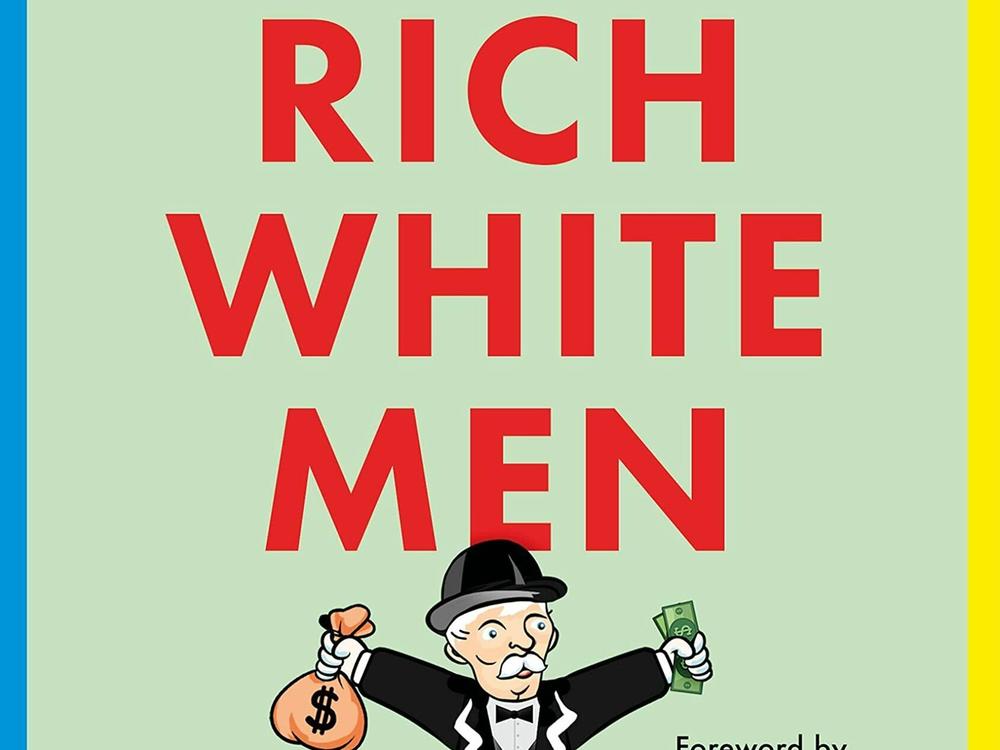Section Branding
Header Content
'Rich White Men' reinforces the argument that inequality harms us all
Primary Content
Drawing from a collection of captivating anecdotes and supported by extensive data, Garrett Neiman's Rich White Men: What It Takes to Uproot the Old Boys' Club and Transform America makes a compelling argument that inequality harms us all.
People in marginalized communities must reckon with having unequal access to the opportunities that make success nearly a foregone conclusion for those positioned on the highest rungs of the socioeconomic ladder. But, Neiman argues, social and economic inequities prevent even the rich white men at the top of the power structure from being able to experience their full humanity.
This is hardly a new concept; just two years ago Heather McGhee's brilliant book, The Sum of Us: What Racism Costs Everyone and How We Can Prosper Together, was longlisted for the National Book Award for its exploration of the same premise, albeit one focused more closely on race.
Neiman succeeds in making distinct contributions to this conversation, though. First, as a rich white man himself, he has an insider's access to that population. This enables him to participate in frank conversations that demonstrate how even "the liberal and philanthropic elite" regularly operate from a foundation of problematic biases and can be especially attached to the myth of meritocracy. While "equal opportunity and meritocracy are alluring, aspirational ideas," he argues they can only be unattainable ideals without significant structural changes that redirect our path towards equity.
Importantly, Neiman doesn't shy away from self-indictment, regularly pointing out where he has fallen short — and where he continues to struggle — as he strives to maintain an orientation towards justice. He draws from his own experience with humility and critical self-reflection without falling into the trap of virtue signaling, at one point noting that "if [his] spouse had not gone to great lengths to get [his] attention, this chapter [on male advantage] wouldn't even be in the book."
Perhaps most notably, Neiman employs a particularly effective metaphor, that of "compounding unearned advantage" to demonstrate how racial and gender advantages amass at an exponential rate, creating more profound inequities over time. This analogy builds on the Racial Equity Institute's framework of "unearned advantage," which "carries less baggage and is less loaded than 'privilege.'" (Neiman helpfully notes that this shift is less about making "those who benefit from unearned advantage comfortable but to find a starting point for a constructive conversation in which everyone feels invested in addressing inequality.") The concept feels a bit like the inverse of intersectionality, the term coined by UCLA law professor Kimberlé Crenshaw and "which she describes as 'a metaphor for understanding the ways that multiple forms of inequality or disadvantage sometimes compound themselves.'"
Neiman documents the cost of compounding unearned interest to marginalized communities, referencing study upon study that underscores the advantages bestowed upon rich white men. The broad strokes, if not the exact statistics, of some of this data will be familiar to those who follow socioeconomic trends in the U.S. Expanding income and wealth divides in this country mean that the top 1 percent now "hold 32 percent of the wealth — about $40 trillion" in addition to nearly 20 percent of income, Neiman cites. The adage of the rich getting richer while the poor experience the opposite is borne out by the reality that "two-thirds of families in poverty remain in poverty a decade later, while most high-income families stay in the top strata." Still, thanks to the breadth of data Neiman presents, even the well-informed will likely encounter more than a few statistical surprises.
I only count myself among the moderately well-informed, but I was still stunned to discover that the "glass cliff" — the dynamic of people of color being elevated to positions of power when institutions are at their least stable — had been studied at all, let alone by multiple universities. Less shocking were the findings themselves: Utah State University researchers reviewing a 15-year span at Fortune 500 companies "found that white women and people of color were more likely than white men to be promoted to CEO at weakly performing firms."
Though the data in Rich White Men might be despairing, Neiman is anything but. In the book's first part, "How the Old Boys Club Reproduces Itself," he builds an unassailable argument for creating a future in which we all can thrive. The second part, "Becoming Equitable," explores concrete — and ambitious — strategies for doing so. They include abolishing poverty, creating a culture of repair, and restoring connection. The chapters in both sections of the book open with epigraphs identifying a myth ("If America addresses economic injustice, racial justice will be solved" and the truth it obscures ("Controlling for wealth, whiteness offers compounding unearned advantages.") To create an equitable society, it is imperative that rich white men reject those myths. It is imperative that we all do. And in doing so, Neiman writes, "we can build a healthy society where everyone feels valued, supported, and able to be their true selves."
Anyone interested in that ultimate goal would benefit from reading this book.
Ericka Taylor is the popular education manager for Take on Wall Street and a freelance writer. Her work has appeared in Bloom, The Millions, Willow Springs and Yes! Magazine.
Copyright 2023 NPR. To see more, visit https://www.npr.org.

